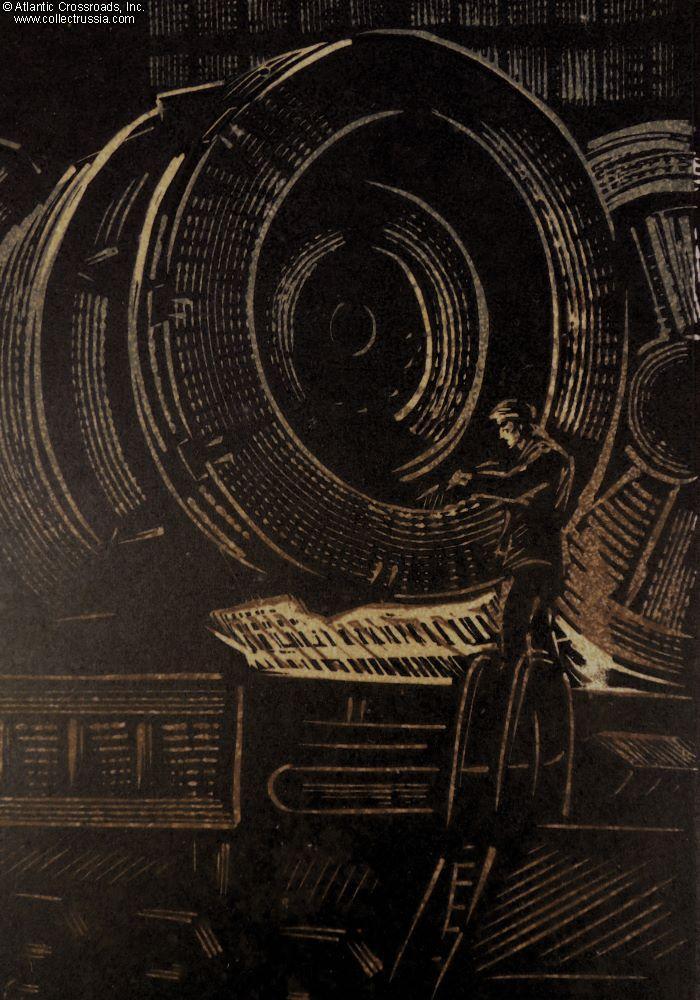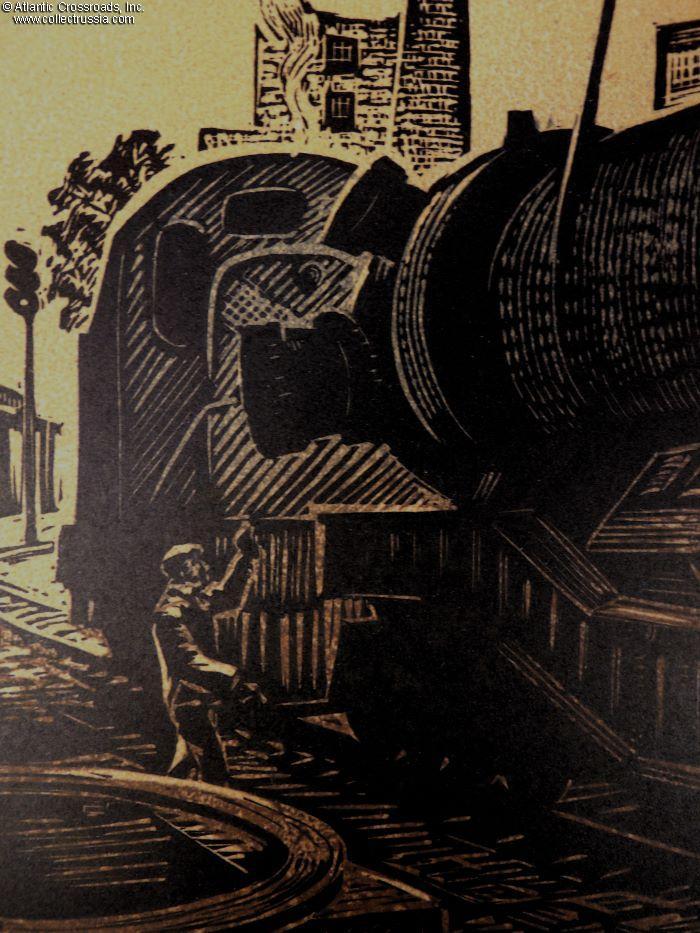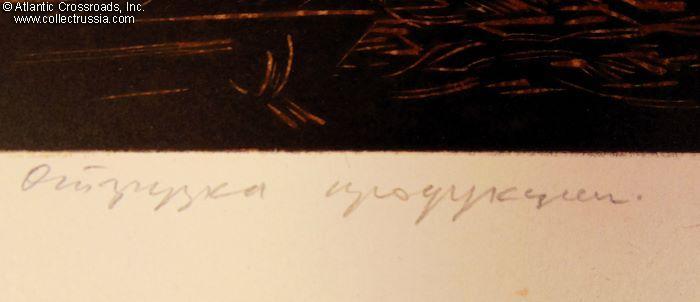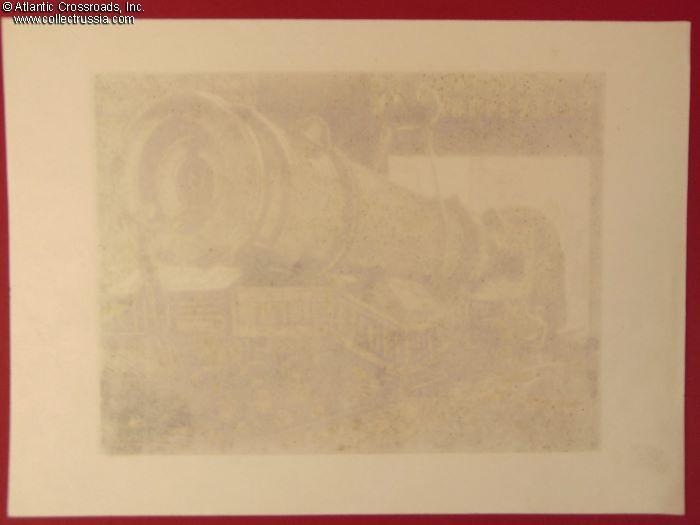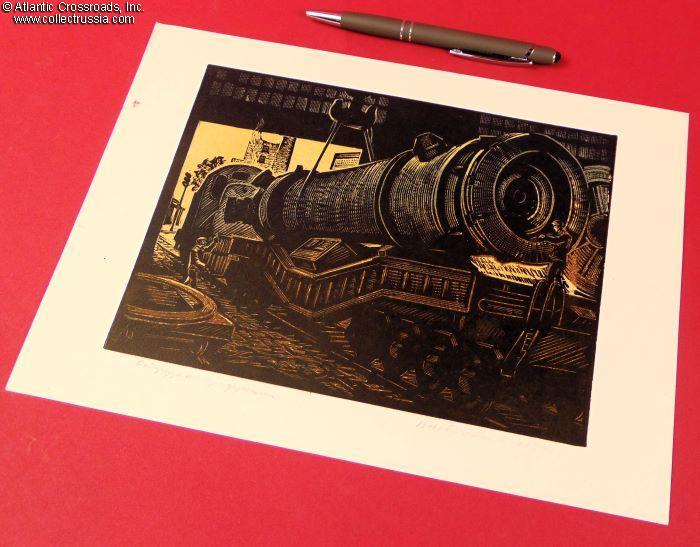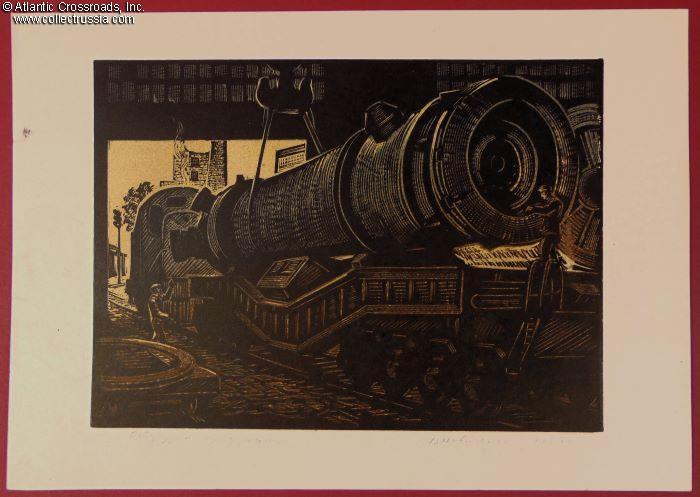
Loading the Product, color lithograph by Novichenko, dated 1987, artist's proof signature and handwritten title.
Measures 11 ½" x 8" overall, the image is 8 ½" x 6 ¼". The artwork depicts a scene of loading the finished product, a giant, incredibly massive steel construction, onto a super-heavy-duty 8-axle railroad car. The sparce choice of colors, all on the somber gloomy end of the palette, underscore this mechanized inhuman environment where man is but a small cog in service of the giant machine. The two workers we see handling the loading process look calm and composed but they are not the focal point. The focal point is "the Product" being served by its human vassals.
Novichenko was amo
Measures 11 ½" x 8" overall, the image is 8 ½" x 6 ¼". The artwork depicts a scene of loading the finished product, a giant, incredibly massive steel construction, onto a super-heavy-duty 8-axle railroad car. The sparce choice of colors, all on the somber gloomy end of the palette, underscore this mechanized inhuman environment where man is but a small cog in service of the giant machine. The two workers we see handling the loading process look calm and composed but they are not the focal point. The focal point is "the Product" being served by its human vassals.
Novichenko was among the first to turn upside down the old ideologically worn-out approach of Socialist Realism to the theme of labor heroes where the hero's portrait dominated his tools of labor and the entire environment. Here we see exactly the opposite.
The lithograph is in excellent condition. The image is pristine. The artist's handwritten signature, date and the title of the work are clear and perfectly legible, in pencil under the image. The margin around the image shows minimal soiling, to be expected in an original work handled by the artist. The verso is also very clean, showing barely visible fingerprints and tiny dots of paint where it had soaked through the paper.
Valentin Novichenko (Валентин Алексеевич Новиченко, 1927-2010) is a well-known master of graphic arts from the Urals. He was born into a working-class family. His childhood impressions of industry and the construction of the Orsk Metallurgical Kombinat (group of factories) deeply affected his art.
He participated in the Patriotic War and then graduated from the Sverdlovsk School of Arts, which he attended from 1956 to 1961. In 1966 he became a member of the Trade Union of Artists of the USSR and a permanent participant of all-Union exhibitions. From 1953 to 1963 he worked as a decorator at the Uralkhimmash and Uralmash, both of which were gigantic powerhouses of Soviet industry that played an extremely important role in the development of the industrial might of the Soviet Union as well as its defense during the Great Patriotic War. They also played a major role in the development of the city of Yekaterinburg (then Sverdlovsk) and the entire Urals Region.
After the death of the artist in 2010, a number of his exhibitions opened in his native Urals and in Moscow, and well-known collectors are now trying to acquire his works. As is evident from his correspondence with colleagues that is now kept in a private collection, Novichenko had a difficult personality. He never tried to sell his works to collectors or earn favors from the bureaucrats managing arts; he also refused to sell his painting to the managing committees of exhibitions on their terms. He was a tireless innovator, always in search of new materials and techniques, and this consumed his entire life. His lithographs on metal or so-called "poly-etching graphics" that employed various techniques and metal cutting instruments invented by him, make his art truly unique and of enduring value.
Please note that the pen in our last photo is for size reference.
$120.00 Add to cart

